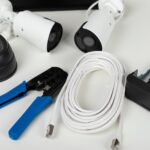Imagine setting up a perfect feeding routine for your pet, only to discover that your trusty electric pet feeder has let you down. These devices, though convenient, are not free from hiccups. Understanding the common issues with timers and dispensing mechanisms could be the difference between a hungry pet and a satisfied one.
- Explore the fundamental components of electric pet feeders prone to malfunctions.
- Learn practical solutions for tackling timer problems and ensuring reliable feeding schedules.
- Discover how to diagnose and fix common dispensing mechanism blockages.
- Embrace preventive maintenance to keep your pet feeder in optimal working condition.
The journey through these insights will not only empower you to fix current issues but also prepare you to prevent future mishaps, ensuring your pet never misses a meal.
Understanding Electric Pet Feeder Malfunctions: Timer and Dispensing Mechanism Solutions
Electric pet feeders have revolutionized the way pet owners manage their pet’s diet by automating feeding times. These devices rely on precise and intricate systems that must work in tandem to ensure smooth operation. When these systems encounter issues, it can lead to significant frustration for pet owners and potentially impact pet health.
The key components of an electric pet feeder include the timer, the dispensing mechanism, and the control circuitry. Each of these parts must function correctly to provide consistent feeding schedules.
The timer is responsible for synchronizing feeding times, a crucial aspect that ensures your pet receives meals at the correct intervals. Meanwhile, the dispensing mechanism consists of motors and gears that transport food from the storage compartment to the pet dish.
Understanding these components helps in quickly identifying malfunctions. Recognizing signs such as missed feeding times, inconsistent portions, or mechanical noises can indicate problems with either the timer or dispensing mechanism.
Identifying these issues early can prevent further damage and ensure that your electrical pet feeder stays reliable, offering your pet the care they need even when you’re not around.
Troubleshooting Timer Issues in Electric Pet Feeders
Timers play a critical role in maintaining automatic feeding schedules. A malfunctioning timer can lead to inconsistent feeding times, which may disrupt your pet’s routine and dietary needs.
Common issues associated with timers include incorrect time settings, unresponsive displays, or failure to trigger feeding events. Start troubleshooting by checking the power supply. Ensure batteries are fresh or that the device is receiving power from an outlet.
If the timer’s digital display is blank or non-functional, this may indicate a power disruption or wiring problem. In some cases, resetting the feeder can resolve temporary glitches. Refer to the user manual for instructions on performing a reset.
If timer settings appear correct, yet feeding schedules are not triggered, insurance that the feeder’s internal clock is functioning correctly. Adjust settings to ensure they are aligned with your desired feeding times. Some models may offer a manual feed option; use this to test the timer’s function.
By systematically examining these components, you can resolve many common timer issues, ensuring that your electric pet feeder operates smoothly, providing timely meals for your pet.
Diagnosing Dispensing Mechanism Challenges
Dispensing mechanisms in electric pet feeders are crucial for ensuring your pet receives the right portion of food at the scheduled time. However, they are prone to malfunctions such as clogs or mechanical jams, which can disrupt the feeding process. Diagnosing these issues correctly is essential to restore the feeder’s functionality.
The first step in diagnosing dispensing mechanism challenges is to inspect the feeder for visible obstructions. In many cases, pet food can accumulate and cause blockages. Carefully remove any debris or stuck food particles.
Next, check the motor and gears for signs of wear and tear. If the motor struggles or makes unusual noises, it may require cleaning or lubrication. Examine the alignment of the components to ensure there is no misalignment causing a jam.
Sometimes, resetting the feeder can resolve temporary glitches. Refer to the manufacturer’s guide for resetting instructions or seek professional advice if the problem persists. By promptly addressing these issues, you can keep your pet feeder dispensing smoothly and reliably.
Preventive Maintenance for Avoiding Electric Pet Feeder Malfunctions: Timer and Dispensing Mechanism Solutions
Proper maintenance is key to preventing malfunctions in your electric pet feeder. Regular care not only minimizes the risk of timer and dispensing mechanism issues but also extends the lifespan of your device.
Begin with routine cleaning. Regularly empty and clean the feed hopper to prevent food buildup that can lead to clogs. Use a soft brush or cloth to remove dust and debris from the feeding components.
Lubrication of moving parts is also vital. A light application of food-safe lubricant can reduce friction and wear on gears and hinges, helping to avoid mechanical failures. Follow the manufacturer’s guidelines for suitable lubrication practices.
Additionally, check for software updates if your feeder is equipped with smart technology. Keeping the software up-to-date ensures optimal performance and can fix any bugs that might affect operation.
Maintaining the power source is equally important. Ensure that batteries, if used, are replaced frequently and that power cords and adapters are in good condition to avoid electrical failures.
By incorporating these preventive maintenance practices, you can ensure your electric pet feeder continues to provide consistent and reliable service, safeguarding your pet’s feeding schedule without interruption.
Making the Most of Your Electric Pet Feeder: Timer and Dispensing Mechanism Solutions
Electric pet feeders have transformed the way pet owners manage feeding schedules, offering a blend of convenience and technology. To get the most out of your device, consider a few strategies that can enhance the overall pet care experience.
Optimal Settings for Feeding Times: Configuring your feeder with precise feeding times can ensure your pet receives meals at the same regular intervals each day. This consistency not only reinforces good habits for your pet but also affirms the smooth functionality of the timer mechanism.
Innovative Usage Ideas: These devices can do more than just provide meals. You can use your feeder to dispense treats at certain times, aiding in training and rewarding positive behavior. Consider creative routines that can engage your pet through the feeder, transforming it from a simple tool into an interactive element of pet care.
Utilizing Smart Technologies: Many modern electric pet feeders come equipped with smart features that connect to your home automation system. By leveraging these capabilities, you can adjust feeding schedules remotely, analyze feeding patterns, and receive alerts for missed meals. This integration allows for flexibility and ensures that feeder timer and dispensing mechanisms are always in sync with your pet’s needs.
By adopting these approaches, you not only optimize the use of your electric pet feeder but also contribute positively to your pet’s health and well-being. Experiencing the full potential of your pet feeder hinges on proper settings, innovative use, and smart technology that caters to your pet’s lifestyle.
FAQ: Troubleshooting and Maintaining Electric Pet Feeders
Why isn’t my electric pet feeder’s timer working?
Check if the feeder is connected to a power source and ensure the timer settings are correctly programmed. Replacing weak batteries can also resolve this issue.
What can cause the dispensing mechanism to jam?
Clogs due to pet food buildup or mechanical faults can cause jams. Regular cleaning and inspecting moving parts can prevent this.
How can I maintain my pet feeder to prevent malfunctions?
- Regularly clean the food tray and internal parts to avoid clogs.
- Check the power source and batteries.
- Follow manufacturer maintenance recommendations.
Is it safe to use smart technology with pet feeders?
Yes, integrating smart technology can enhance the functionality of pet feeders by providing better control and insights into feeding habits.
What should I do if the feeder doesn’t power on?
Verify the power connection, test outlets, replace batteries, and check cords for damage. If these steps don’t work, consult the user manual or contact support.





